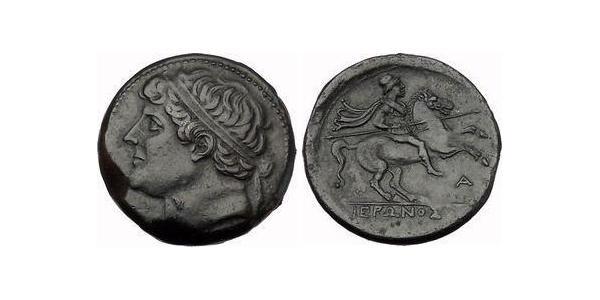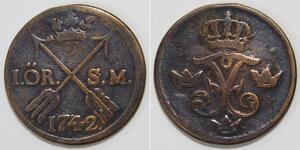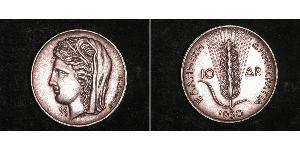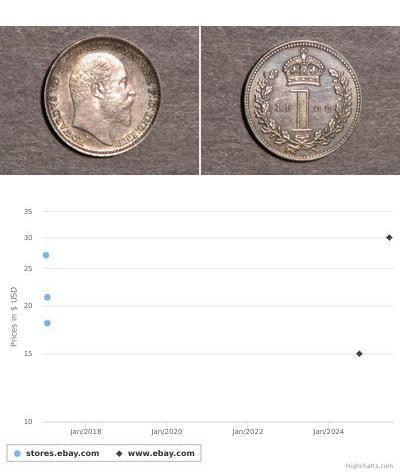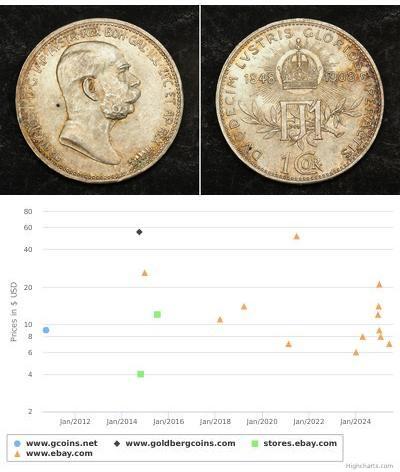[ 5362] SICILY: SYRACUSE - Bronze Hemilitron (27mm, 18.84 gm.) under king Hieron II,240/30-218 B.C. Reference: SNG Cop.835 3050D 4762 M8. Diademed head left. Hieron, holding couched lance in right hand, on horse prancing right, IEP ΩNO Σ, A monogram below horse's forelegs. Provided with certificate of authenticity. CERTIFIED AUTHENTIC by Sergey Nechayev, PhD - Numismatic Expert Hieron II (c. 308 – 215 BC), king of Syracuse from 270 to 215 BC, was the illegitimate son of a Syracusan noble, Hierocles, who claimed descent from Gelon. He was a former general of Pyrrhus of Epirus and an important figure of the First Punic War. On the departure of Pyrrhus from Sicily (275 BC) the Syracusan army and citizens appointed him commander of the troops. He strengthened his position by marrying the daughter of Leptines, the leading citizen. In the meantime, the Mamertines, a body of Campanian mercenaries who had been employed by Agathocles, had seized the stronghold of Messana, and proceeded in harassing the Syracusans. They were finally defeated in a pitched battle near Mylae by Hieron, who was only prevented from capturing Messana by Carthaginian interference. His grateful countrymen then made him king (270). In 264 BC he again returned to the attack, and the Mamertines called in the aid of Rome. Hieron at once joined the Punic leader Hanno, who had recently landed in Sicily; but fighting a battle to an inconclusive outcome with the Romans led by the consul Appius Claudius Caudex, he withdrew to Syracuse. Pressed by the Roman forces, in 263 he concluded a treaty with Rome, by which he was to rule over the south-east of Sicily and the eastern coast as far as Tauromenium. From this time till his death in 215 BC he remained loyal to the Romans, and frequently assisted them with men and provisions during the Punic war. He kept up a powerful fleet for defensive purposes, and employed his famous kinsman Archimedes in the construction of those engines that, at a later date, played so important a part during the siege of Syracuse by the Romans. According to a story told by Vitruvius, Hiero suspected he was being cheated by the goldsmith to whom he had supplied the gold to make a votive crown for a temple. He asked Archimedes to find out if all the gold had been used, as had been agreed. Archimedes, on discovering the principle of displacement needed to measure the density of the crown is said to have shouted "eureka, eureka!" while running naked through Syracuse. Vitruvius concludes this story by stating that Archimedes' method successfully detected the goldsmith's fraud; he had taken some of the gold and substituted silver instead. A picture of the prosperity of Syracuse during his rule is given in the sixteenth idyll of Theocritus, his favourite poet. In The Prince (VI), Machiavelli cites Hiero as an exceptionally virtuous man and a rare example of someone who rose to princehood from private station. Syracuse pronounced, Sicilian: Sarausa, Ancient Greek: Συράκουσαι – transliterated: Syrakousai) is a historic city in southern Italy, the capital of the province of Syracuse. The city is famous for its rich Greek history, culture, amphitheatres, architecture and association to Archimedes, playing an important role in ancient times as one of the top powers of the Mediterranean world; it is over 2,700 years old. Syracuse is located in the south-east corner of the island of Sicily, right by the Gulf of Syracuse next to the Ionian Sea. The city was founded by Ancient Greek Corinthians and became a very powerful city-state. Syracuse was allied with Sparta and Corinth, exerting influence over the entire Magna Grecia area of which it was the most important city. Once described by Cicero as "the greatest Greek city and the most beautiful of them all", it later became part of the Roman Republic and Byzantine Empire. After this Palermo overtook it in importance, as the capital of the Kingdom of Sicily. Eventually the k ...
más ...
Similar Coin Groups
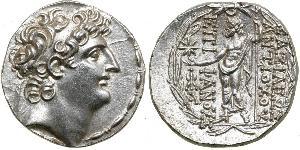
1 Tetradracma Imperio seléucida (312BC-6 ...
grupo tiene 20 monedas / 19 precios
Add coin to this group
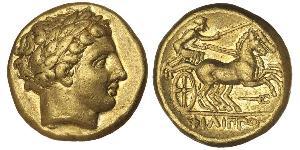
1 Stater Reino de Macedonia (800BC-146BC ...
grupo tiene 24 monedas / 24 precios
Add coin to this group
2025-06-14
- Historical Coin Prices
2025-05-23
- Historical Coin Prices
1 Corona Imperio austrohúngaro (1867-1918) Plata F ...
Precios de moneda de fuentes públicas
Detalles
Usted podría estar interesado en …

